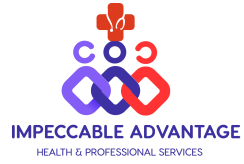Introduction
Effective communication between families and home care providers is crucial for delivering quality care to loved ones. Misunderstandings can lead to unmet needs, frustration, and compromised safety. Recognizing and addressing common communication mistakes can foster a collaborative environment, ensuring the best outcomes for those receiving care.
Mistake 1: Lack of Clear Expectations
The Issue: Families often assume caregivers understand their expectations without explicit communication.
Solution: Clearly outline care routines, preferences, and specific needs. Documenting these details provides a reference for caregivers, ensuring consistency and reducing misunderstandings.
Mistake 2: Infrequent Communication
The Issue: Limited updates can lead to gaps in care and unaddressed concerns.
Solution: Establish regular check-ins, whether weekly meetings or daily logs, to discuss the patient’s status, address concerns, and adjust care plans as needed.
Mistake 3: Not Encouraging Feedback
The Issue: Caregivers may hesitate to share observations or suggestions, fearing overstepping boundaries.
Solution: Foster an open environment where caregivers feel comfortable sharing insights. Their firsthand observations can be invaluable in adjusting care strategies.
Mistake 4: Overlooking Cultural and Personal Differences
The Issue: Ignoring cultural, linguistic, or personal nuances can hinder effective communication and care delivery.
Solution: Engage in conversations about cultural preferences, communication styles, and personal values. This understanding promotes respect and tailored care.
Mistake 5: Failure to Use Communication Tools
The Issue: Relying solely on verbal updates can lead to forgotten details or misinterpretations.
Solution: Utilize tools like care journals, apps, or checklists to track routines, medications, and observations. These tools enhance transparency and continuity of care.
Conclusion
Avoiding these common communication pitfalls requires proactive engagement, openness, and the use of effective tools. By fostering a collaborative relationship with home care providers, families can ensure their loved ones receive compassionate, consistent, and personalized care.

